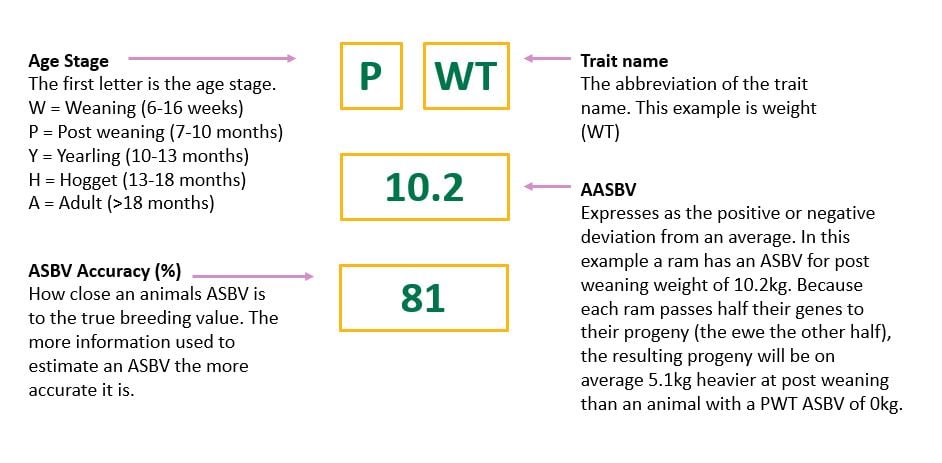ASBVs and Indexes explained
What are ASBVs
ASBVs are a prediction of an animal’s genetic merit for a particular trait.
They are an indication of how an animal’s progeny will perform based on the genes they will pass on. ASBVs are comparable across flocks, unlike Flock Breeding Values (FBVs) that are only comparable within a flock.
An ASBV may be different to the animal's actual performance that is a combination of both genetic and environmental influences.
There are ASBVs for many different traits that impact the performance and profitability of sheep enterprises. These include:
- growth traits
- carcase and eating quality traits
- wool traits
- reproduction traits
- health traits.
ASBVs are generated from the data, pedigree and genomic information collected by Sheep Genetics members to provide a prediction of genetic merit. Breeding values are estimated like this because thousands of genes, most having only a small genetic effect, control most traits.
Figure 1: How ASBVs are typically displayed

What are indexes?
Indexes combine important production traits into one number and are a useful way to rank animals quickly and easily.
Indexes are created by putting a weighting on each trait depending on how important they are. The breeding value of each animal is multiplied by this weighting to create one number.
Using indexes to select animals ensures balanced genetic progress is made towards a more profitable sheep production system. A ram with a higher index will produce progeny that are more profitable in that production system.
Below are three key steps for using indexes in purchasing decisions:
- Rank animals on your chosen index
- Consider the individual ASBVs which are important in your breeding objective to short list animals
- Make sure those animals meet your structural and type requirements.
There is a range of indexes for each of the analyses. For more information on these indexes see the guides listed top right.
